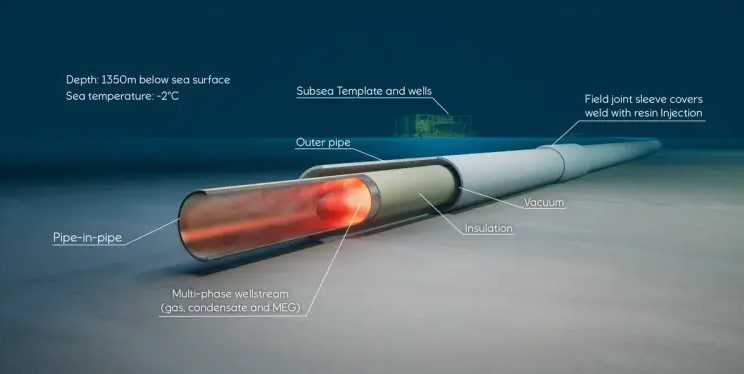Norwegian oil major, Equinor, said it submitted a plan for development and operation (PDO) of the Irpa gas discovery, formerly known as Asterix, to Norway’s Minister for Petroleum and Energy, Terje Aasland.
Proven in 2009, the deepwater gas discovery called Irpa has estimated recoverable gas resources of approximately 20 billion standard cubic metres, equivalent to 124 million barrels of oil equivalent. According to Equinor, this equates to the consumption of nearly 2.4 million British households over a period of seven years.

The gas will be phased into existing infrastructure over Aasta Hansteen and transported to the Nyhamna gas processing plant via Polarled. From there, gas will be transported via the Langeled pipeline system to customers in the UK and continental Europe. Equinor said the development will ensure activity and stable delivery of gas from Aasta Hansteen, an oilfield in the Norwegian Sea, until 2039.
Equinor starts up Peregrino Phase 2 project offshore Brazil | OilNOW
The development will have a total cost of NOK (Norwegian Krone) 14.8 billion (approximately US$1.48 billion), and the field is scheduled to come on stream in the fourth quarter of 2026. Equinor said there will be joint production from Irpa and Aasta Hansteen through 2031 and then Irpa will continue to produce until 2039.
“This is a good day—the development of Irpa will contribute to predictable and long-term deliveries of gas to customers in the EU and the UK,” said Geir Tungesvik, Equinor’s executive vice president for Projects, Drilling and Procurement, on the day of the PDO submission.
Equinor hires Bristow for search and rescue work in Norwegian North Sea | OilNOW
The discovery will be developed with three wells and an 80-kilometre pipeline to the Aasta Hansteen platform. As the only planned deepwater development in Norway, the technical solution will contribute to new competence development in the industry.
Project director for Irpa, Hogne Pedersen, said Irpa will be largely dependent on international specialist suppliers who can operate in water depths of 1,350 metres.
“It has been challenging to develop Irpa. Deep water and low temperatures on the seabed have necessitated the qualification of innovative new technology for pipelines, but good support in the partnership and increased demand for gas have made an investment decision possible,” says Pedersen.



